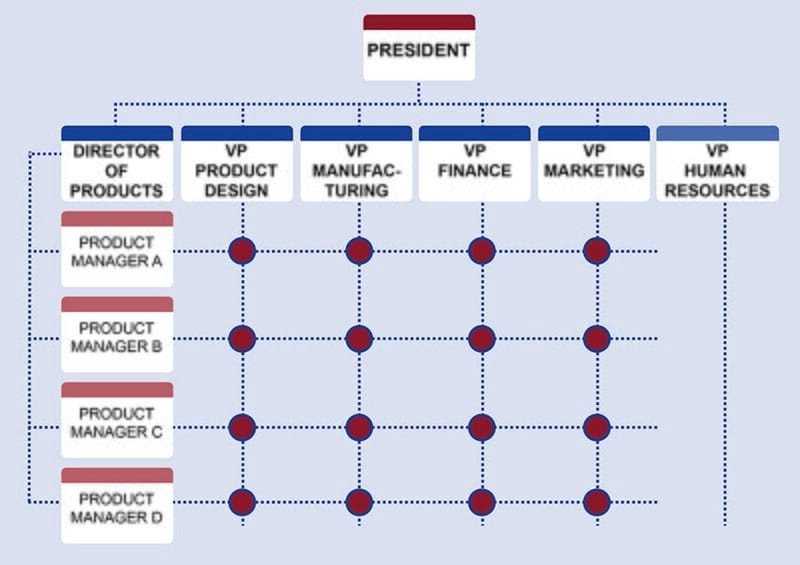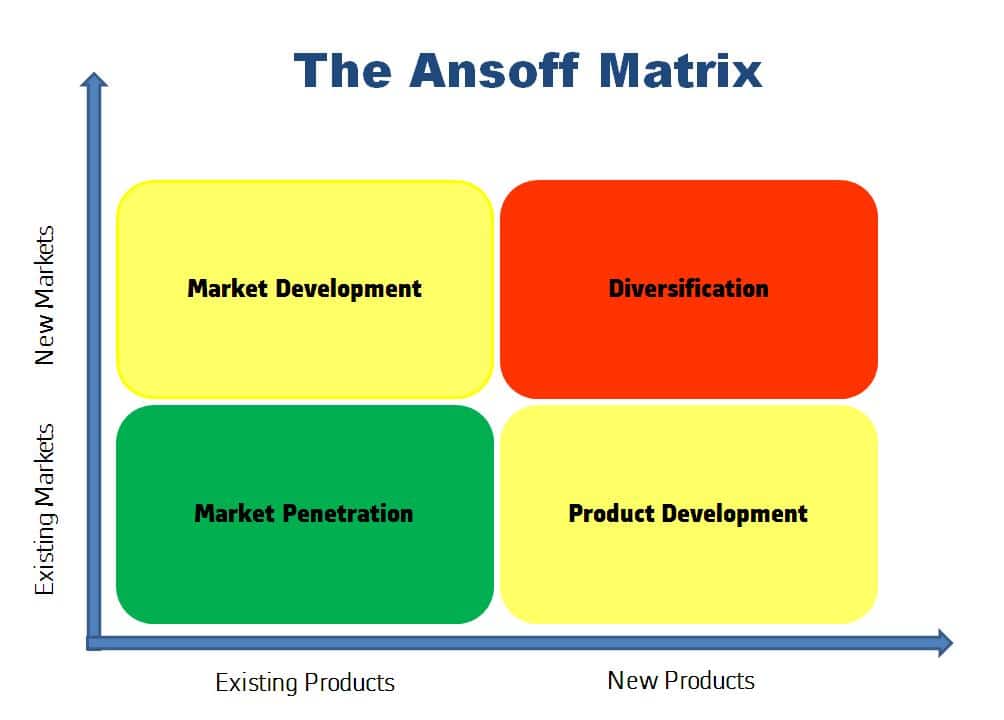Matrices, while an abstract mathematical concept, play an instrumental role in various sectors, with business being a particularly noteworthy application. Representing numerical data in a grid-like, rectangular structure, matrices allow for the efficient manipulation and visualization of multivariate data, which is a common requirement in business operations.
From inventory management in vast supply chains to financial analysis and market research, matrices have shown their value in facilitating data-driven decision-making and strategic planning. As businesses increasingly rely on big data and complex analytics, the role of matrices is only set to grow.
Understanding Matrices
A matrix is an arrangement of numbers or symbols in rows and columns. The individual items in a matrix are known as its elements. The dimensions of a matrix are described by the number of its rows and columns. So, for example, a matrix with 2 rows and 3 columns is referred to as a “2 by 3” matrix.
Consider this “2 by 3” matrix for illustration:
| 3 8 1 |
| 7 5 2 |
Matrices can be subjected to various operations including addition, subtraction, multiplication, transposition (flipping the matrix over its diagonal), and finding the determinant (a specific value calculated from the elements of a square matrix). An understanding of these operations is essential in harnessing the utility of matrices in a business context.

Applications of Matrices in Business
As the business world becomes increasingly complex and data-driven, the need for effective tools to manage and analyze this information also grows. Here, an often-underestimated tool comes into play – the mathematical concept of matrices. These grid-like, numerical structures are not just confined to the abstract realm of mathematics but have a plethora of practical applications that span across different business operations.
From managing vast inventories and conducting financial analysis to risk assessment and strategic planning, matrices find themselves woven into the fabric of modern business strategies. In the following sections, we’ll explore in-depth the various applications of matrices in business and how they contribute to effective and efficient operations.
- Inventory Management: Matrices help simplify the process of managing a vast number of products across multiple locations. Each row could represent a different product, each column a different location, and the corresponding matrix element the quantity of the specific product at that location. The businesses can easily monitor stock levels and plan restocking based on these matrices.
- Financial Analysis: Businesses use matrices to simplify complex financial calculations. For instance, they might use matrices to track different financial variables over time and detect trends. With matrices, businesses can perform ratio analyses, variance analyses, and financial forecasting.
- Strategic Planning: Tools like the Ansoff Matrix and the Boston Consulting Group (BCG) Matrix aid strategic planning. The Ansoff Matrix helps businesses decide their product and market growth strategy, while the BCG Matrix assists in allocating resources among different business units and makes it easier to identify strategic opportunities.
- Risk Management: Businesses often use risk matrices to evaluate and manage potential risks. A risk matrix provides a way to calculate the severity of risk by considering both the likelihood of the risk and its potential impact. This aids in prioritizing risks and focusing on those that are most significant.
- Data Analysis and Visualization: Matrices can be used to structure data collected from market research, customer feedback, or other sources. By organizing this data into matrices, businesses can analyze it more efficiently, derive valuable insights, and visualize complex data relationships.
- Production Planning and Efficiency: Matrices are used in production planning to maximize efficiency and minimize costs. They can help calculate the optimal mix of inputs for production to achieve maximum output with minimum cost.
- Marketing Research: Companies use matrices, like the SWOT analysis (Strengths, Weaknesses, Opportunities, and Threats), to analyze the internal and external factors affecting their operations. This aids in creating more effective marketing strategies.
- Decision Making: Matrices can assist in decision making by creating a structured framework that allows for comparison of multiple options against various criteria. This is especially helpful in situations where multiple competing choices are available, and decision-makers need a way to objectively evaluate each option.
By effectively implementing matrices in these various applications, businesses can drive their operational efficiency, strategic planning, and overall decision-making processes to new heights.
Real-Life Examples of Matrices in Business
- Inventory Management in Zara: Zara, a globally recognized fashion retailer, uses matrices to manage inventory across its stores worldwide. Each product type can be represented by a row, with each store represented by a column. The element at the intersection of a row and a column then indicates the quantity of that product in the corresponding store.
- Financial Analysis in Citigroup: Citigroup, a multinational investment bank, uses matrices in financial modeling and forecasting. Different investment portfolios can be represented as rows, and different financial parameters (like ROI, risk factors, growth rate) as columns. By manipulating these matrices, analysts can simulate various market conditions and predict portfolio performance.
- Risk Assessment in ExxonMobil: ExxonMobil, an international oil and gas company, employs risk matrices to assess potential operational and financial risks. By mapping these risks on a matrix according to their likelihood and potential impact, the company can visualize the risk landscape and direct risk management efforts effectively.
Ansoff Matrix: A Strategic Planning Tool
The Ansoff Matrix, also known as the Product/Market Expansion Grid, is a strategic planning tool that provides a framework for companies to analyze their growth strategies. The matrix, named after the strategic thinker Igor Ansoff, provides a structured approach for businesses to consider their product and market growth strategy.

The Ansoff Matrix is a 2×2 matrix that divides into four growth strategies:
- Market Penetration: This strategy involves increasing market share within existing market segments. This can be achieved by selling more products or services to established customers or by finding new customers within existing markets. It typically includes competitive pricing strategies, advertising, and sales promotions.
- Market Development: This strategy aims to sell existing products into new markets. This could involve exporting products to new geographical areas, creating new distribution channels, or pricing strategies to attract different customers or create new market segments.
- Product Development: This strategy involves developing new products to serve existing markets. These products may be related to current products or could be entirely new. This approach often requires significant research and development.
- Diversification: This strategy is about entering new markets with new products. It is the most risky of the four strategies because the business is moving into areas where it has little or no experience.
For example, Apple Inc. has used the Ansoff Matrix for its growth strategy. Initially, Apple focused on market penetration with its Mac computers. Then, they moved to product development by introducing the iPod, iPhone, and iPad to their existing customers. They also expanded into new markets (market development) with their iTunes store and Apple stores. Finally, Apple diversified into the telecommunications sector when it introduced the iPhone.
How Are Matrices Used In Business: Conclusion
Matrices, with their intrinsic ability to handle, manipulate, and visualize multivariate data, have cemented themselves as indispensable tools in business. They simplify complex operations, providing clarity to convoluted datasets and enabling businesses to make data-driven decisions.
From tracking global inventories and financial modeling to strategic planning with tools like the Ansoff Matrix, the applications of matrices are as diverse as they are impactful. A strong understanding of these concepts allows businesses to maximize their analytical capabilities, offering a considerable competitive advantage. As the future of business trends toward ever-greater data complexity, the role of matrices will continue to grow, making them an essential tool in any business’s arsenal.
